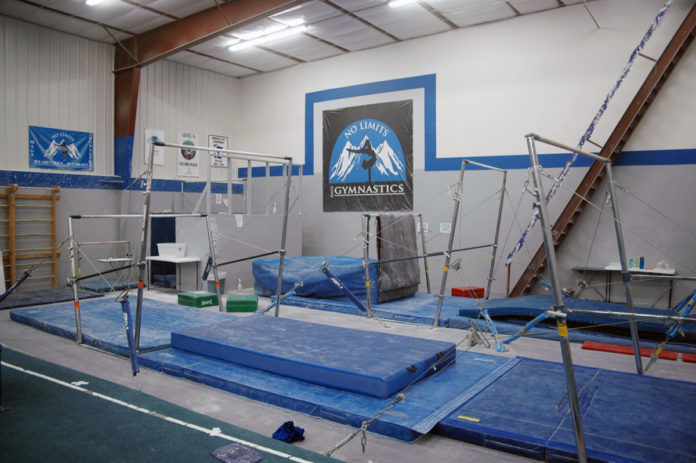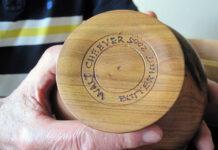It’s a regular, busy afternoon at the Mankato Area Gymnastics School, located on West Lind Court just across from the Hwy 169 McDonald’s. The wide open gym is littered with everything an aspiring gymnast could hope for: a balance beam, trampolines, uneven bars and, of course, plenty of blue floor mats. A group of young gymnasts is stretching and listening keenly to an instructor, who’s demonstrating something next to a balance beam.
Across the gym, another young gymnast is concentrating hard, too, as she stares down a swinging rope. Young Rona is 8 years old and has been a MAGS student for the past three years. She squares her shoulders, takes her starting stance and dashes for the rope. When she draws near, she takes one big leap and grabs ahold, swinging high into the air as she laughs wildly the whole time. Her instructor, Haley Williams, laughs with her.
It’s a great experience. It’s fun working with the kids and seeing them have fun and continue to grow.Haley Williams
If there were any spectators watching this afternoon’s gymnastics classes, they might wonder why Rona and Williams are all by themselves. The answer is simple: Rona is a special needs student who is on the autism spectrum, and Williams is a Minnesota State University, Mankato student studying special education. She and her fellow MSU instructor, Olivia Mikkelson, were hired in September in an effort to offer more opportunities to gymnasts like Rona.
“It’s a great experience,” Williams said. “It’s fun working with the kids and seeing them have fun and continue to grow.”
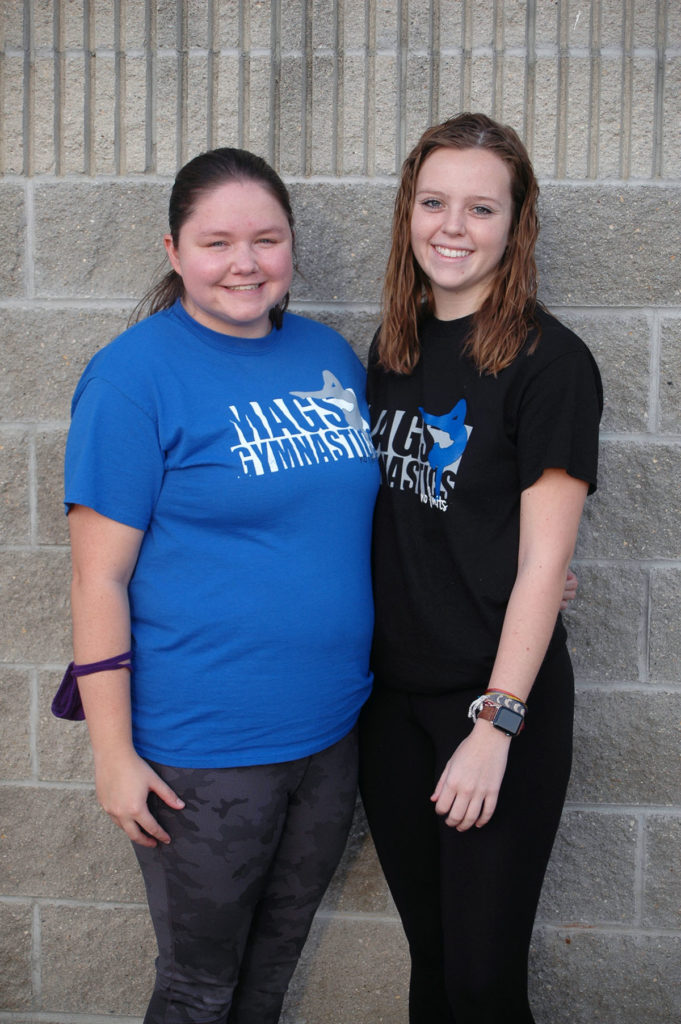
Offering something more
According to Stacy Latzke, who owns and runs the Mankato Area Gymnastics School with her husband Fred, they have always made sure that anyone who wanted to take a class at MAGS was welcome. Every season, the school has one or two special needs students, but there has never been an instructor trained specifically in special education until now. After Latzke worked with another special needs gymnast, 5-year-old Jaaron, for the first couple of weeks of the school’s fall season, she started thinking about finding someone who could better connect with him and understand his special needs.
“The first couple weeks, I taught him and coached him, and it was very, very difficult for me because I didn’t have any background in working with special ed kids,” Latzke said. “I felt like he didn’t get out of the class what he could have if he’d had somebody trained that worked with kids like that.”
Latzke reached out to MSU-Mankato to see if there were any special education students who would be interested in an internship. She was connected with Williams and Mikkelson, both juniors, who are in their second semester of MSU’s special education program. The MSU students are now paid instructors at MAGS, with the plan of teaching there as long as they’re able.
[This] was a really cool opportunity that I felt like I had to take advantage of. I know how big sports were for me as a kid, and I wanted to make sure everybody can get that opportunity as well.Olivia Mikkelson
Mikkelson, who comes from Eden Prairie, said her interest in special education grew from her own experiences with an older brother who has autism. Besides her own athletic background in swimming, she has worked with Special Olympics in the past and hopes to coach both Special Olympics and swimming one day.
“[This] was a really cool opportunity that I felt like I had to take advantage of,” she said. “I know how big sports were for me as a kid, and I wanted to make sure everybody can get that opportunity as well.”
Williams is from Andover and, while she doesn’t have anyone with special needs in her immediate family, she was close growing up to her daycare provider’s daughter, who had Down Syndrome.
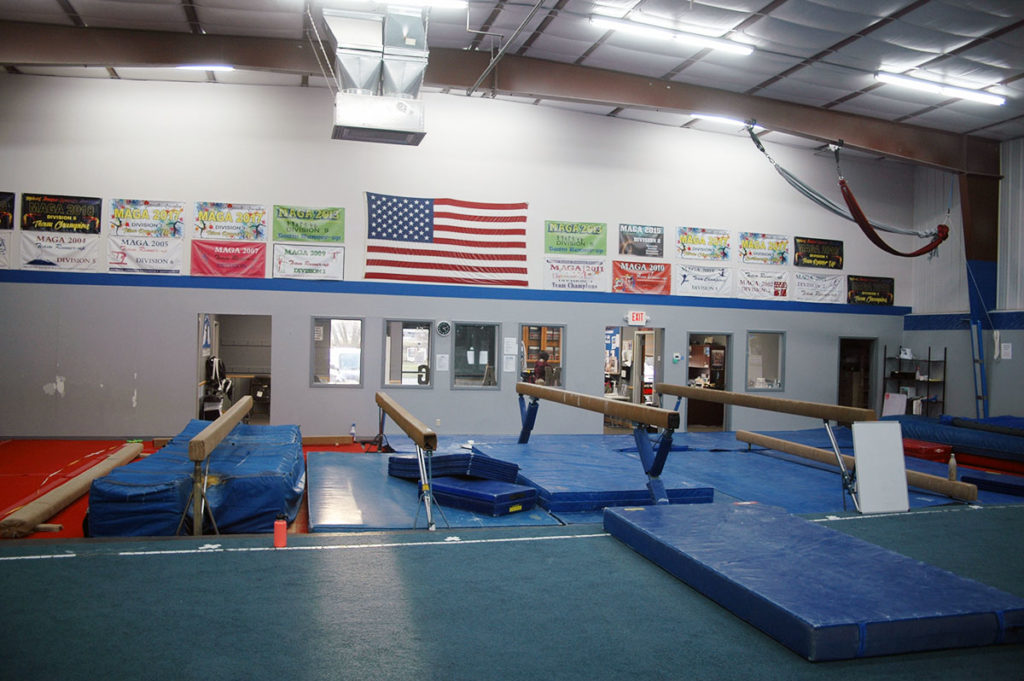
“When I was senior in high school, she was a freshman, so I got to be a teacher’s assistant for some of her classes and hang out in that little area of the school,” Williams recalled. “I got a better perspective of what actually goes on, and I thought that’d be fun [to do as a job].”
Williams has also worked as a paraprofessional, and she said she was attracted to the opportunity at MAGS because it was a different side of special education than what she had already experienced.
“I saw the email for gymnastics, and I thought that’d be fun to get a different perspective of things,” she said. “All we’re going to be doing [once we graduate] is a lot of stuff in schools, but when you get into something like gymnastics, it’s a different side of things. You still do similar stuff; it’s just more fun.”
One-on-one instruction
Williams and Mikkelson started instructing at MAGS in mid-September. They work with two students, Rona and Jaaron. Both women work with Jaaron on different days, while Williams is the only instructor who works with Rona.
According to Williams, she and Mikkelson guide their students and teach them gymnastics in a way that works for them and their abilities. The students still learn about different parts of gymnastics; they’re just not part of a larger group.
“We go off on our own, and we use all the stuff around the gym area and teach them how to do it,” Williams said. “We’re working on taking turns… We’re working hard on that one. Basically, we’re just kind of there to give the extra help that isn’t [available] otherwise if they were just put into the big group. It’s more specialized.”
Big goals are important, but [we have to] take it one day at a time… like, ‘Okay, our athlete today waited his turn once, and that was great.’ That’s what we need to look at today, instead of everything that went wrong, and build off that.Olivia Mikkelson
By now, Williams and Rona have gotten used to working with each other, and Williams said she has figured out what might overload Rona’s senses or cause her to have difficulty concentrating.
“Working with my girl, it’s gotten better as she gets used to me, so we’ve made a little bit of progress, which is exciting,” she said. “I’ve realized what she likes and what she doesn’t like.”
Both Mikkelson and Williams said they are trying to teach their students how to better follow instructions, adhere to a schedule, learn gymnastics skills and be able to become a part of bigger groups as much as possible. Mikkelson said the “end, end, end goal” is to transition their students into bigger classes, but that’s not as important as meeting the students where they are right now.
“Our end goal is to run us out of a job,” she said. “Working this field, it’s definitely the tiny victories are important, and taking one thing, one day at a time. Big goals are important, but [we have to] take it one day at a time… like, ‘Okay, our athlete today waited his turn once, and that was great.’ That’s what we need to look at today, instead of everything that went wrong, and build off that.”
A learning process
For Mikkelson and Williams, teaching Rona and Jaaron means using what they learned at MSU but also figuring out what works for each student.
“It’s kind of a learning process,” Mikkelson said. “You learn things that work with some kids, and you try it with a kid at gym, and it just doesn’t work. So, it’s taking strategies that you know and doing a lot of trial and error.”
One challenge for Williams and Rona is that Rona is still learning the necessity of taking turns and doesn’t always want to wait. This calls for Williams’ smooth intervention at times.
“When she wants to do something, she’s going to do it,” Williams said. “There’s not a lot that we can tell her, because if she wants to jump into the foam pit, she’s going to run over and jump into the foam pit. It’s more of working around the other people in the gym. Some people are okay with it; I just ask, ‘Is it okay if she has a turn?’ But other times it doesn’t go so smoothly, and you have to work around that.”
It’s kind of a learning process. You learn things that work with some kids, and you try it with a kid at gym, and it just doesn’t work. So, it’s taking strategies that you know and doing a lot of trial and error.Olivia Mikkelson
Head coach Jon Janzen is especially good about working with their students, Mikkelson said. He either lets Jaaron take turns when he is interested in something or helps find a way to interest him in something else.
“[Jaaron] really loves the vault, and sometimes Jon is working with some of the more advanced students, who are trying to use it,” Mikkelson said. “So one time, he helped me go on the other side of the foam pit and make something, so [Jaaron] could still participate but everyone could do what they needed to do.”
Another challenge stems from COVID-19 requirements, since both special needs students read the two instructors’ facial expressions—which right now are mostly hidden behind masks.
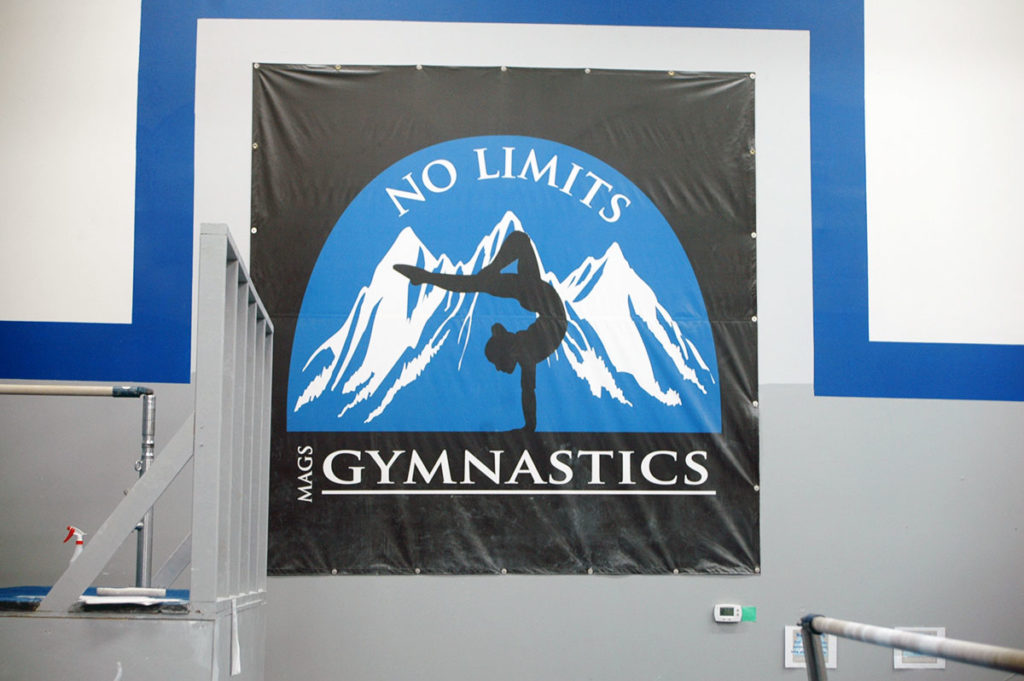
“The first time we worked with Jaaron, his parents said that he reads facial expressions a lot, and he likes seeing your face,” Mikkelson explained. “But wearing a mask, you can’t really do that, so there’s some added barriers to it with COVID-19. Other than that, it’s not too crazy.”
Williams added that she has gotten especially good at smiling above her mask when working with Rona.
“I use a lot of facial expressions through my eyes now,” she said. “If I’m smiling, I have to smile really hard and squint my eyes, or if I’m laughing, I laugh louder so that she can hear.”
I use a lot of facial expressions through my eyes now. If I’m smiling, I have to smile really hard and squint my eyes, or if I’m laughing, I laugh louder so that she can hear.Haley Williams
Williams and Mikkelson never teach their students together, but, because they both teach Jaaron on different days, they are constantly communicating with each other about what to do for the next week’s lessons.
“We talk every week to say, ‘This is what happened, and this is what we’re working on,’” Mikkelson said. “In our profession, communication is really important. I don’t want to work on one thing that Haley’s not working on.”
“We’d be setting ourselves back,” Williams agreed.
More opportunities in the future
Latzke said she hopes to keep working with Williams and Mikkelson as long as possible, and then form partnerships with more MSU students if there’s enough need at her school.
“This [is] a good way to broaden [our offerings] and get more people in here who have kids with special needs, so that we can accommodate to them better,” she said.
[These kids] can do whatever they want. They can do anything that they put their mind to. We have the resources to help them and teach them the same as everybody else.Haley Williams
Both Mikkelson and Williams encourage parents with special needs kids to reach out to MAGS.
“[These kids] can do whatever they want,” Williams said. “They can do anything that they put their mind to. We have the resources to help them and teach them the same as everybody else, and they should take advantage of it.”
“It’s a great thing that they’ve got going here,” Mikkelson agreed. “I encourage parents to sign up for their kids. They shouldn’t let their disability stop them.”

